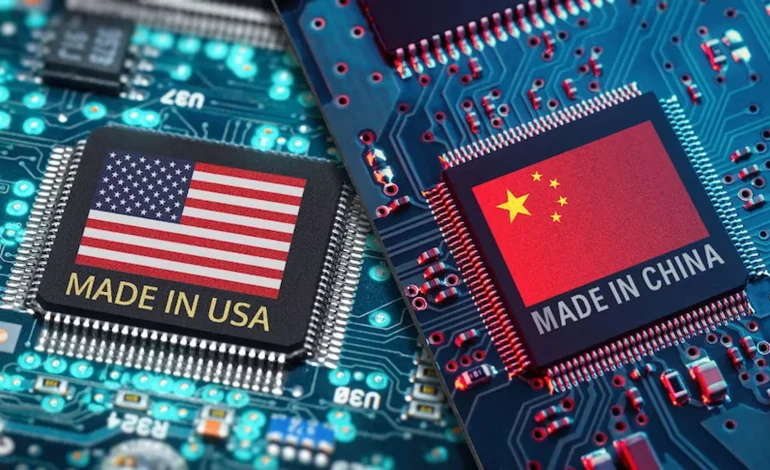China’s Semiconductor Self-Reliance: From Import Substitution to Global Competitiveness

Introduction
China’s semiconductor industry is rapidly evolving in response to geopolitical pressures, export restrictions, and global market dynamics. The country has launched a concerted effort to achieve self-reliance in chip production, targeting mid-to-high-end logic and memory chips, AI accelerators, and industrial-grade microprocessors. Government policies, industrial funds, and private investment are driving innovation while strengthening domestic manufacturing and supply chain resilience.
Policy Support and Industrial Strategy
The Chinese government has implemented a multi-layered strategy to support semiconductor self-reliance. Key measures include subsidies for domestic fabs, low-interest loans for chip R&D, and tax incentives for innovation. The National Integrated Circuit Industry Investment Fund, valued over $50 billion, co-finances strategic projects in AI chips, memory devices, and semiconductor equipment. These policies aim to reduce dependency on foreign suppliers while accelerating domestic innovation.
Domestic Manufacturing Expansion
Domestic manufacturers are scaling production lines for mid-tier logic chips and DRAM memory. Companies such as SMIC, Hua Hong Semiconductor, and ChangXin Memory are investing in next-generation process nodes, wafer fabrication, and AI chip design. The focus is on bridging the technological gap caused by export restrictions and creating a competitive domestic ecosystem.
Innovation in AI and Industrial Chips
Chinese chipmakers are developing AI-specific accelerators for cloud computing, autonomous vehicles, and industrial automation. These chips integrate machine learning inference capabilities, energy-efficient design, and enhanced reliability for industrial applications. Collaboration with AI labs and cloud platforms ensures real-world testing and rapid adoption of AI-focused semiconductor solutions.
Investment in Research and Development
R&D investment has grown significantly, with private and state-backed funds supporting early-stage chip design, process engineering, and equipment development. Modular finance concepts are indirectly applied, enabling automated allocation of funding to high-priority R&D projects, ensuring efficiency, transparency, and measurable outcomes in chip innovation.
Supply Chain Localization
To mitigate the impact of import restrictions, Chinese manufacturers are localizing critical components such as photolithography materials, specialty gases, and wafer substrates. Strategic partnerships with domestic suppliers reduce dependency on foreign imports and strengthen resilience in high-tech manufacturing.
Market and Trade Implications
China’s self-reliance strategy influences global semiconductor markets. Domestic production reduces import demand, while exports of mid-tier chips increase China’s influence in regional technology supply chains. Companies in neighboring countries observe China’s advances and adjust their investment and R&D strategies accordingly.
Challenges and Limitations
Despite rapid progress, China faces challenges:
- EUV Lithography Access: Cutting-edge nodes still rely on foreign technology.
- Talent Shortage: Highly specialized chip design and process engineers are limited.
- Global Competition: Taiwan, South Korea, and the U.S. maintain leadership in advanced semiconductor manufacturing.
Programs addressing these challenges include university-industry partnerships, talent development initiatives, and international collaboration on research while maintaining strategic autonomy.
Integration with AI and Digital Infrastructure
AI applications rely on high-performance computing and specialized semiconductor hardware. The growth of domestic chips supports AI research, cloud platforms, and smart infrastructure projects. Modular and programmable finance frameworks facilitate funding for AI-chip R&D, ensuring alignment between financial flows and technological milestones.
Global Competitiveness and Outlook
By 2030, China aims to produce the majority of its mid-tier and advanced chips domestically. Investment in AI accelerators, memory devices, and industrial processors will position Chinese manufacturers to compete internationally. Strategic deployment of modular funding frameworks and integration with AI-driven innovation ecosystems strengthens both domestic capability and global competitiveness.
Economic and Policy Implications
- Strengthened semiconductor industry reduces vulnerability to export restrictions.
- Domestic innovation drives growth in AI, industrial automation, and cloud infrastructure.
- Regional influence grows as neighboring markets adopt Chinese semiconductor technology and design standards.
Conclusion
China’s semiconductor self-reliance strategy reflects a comprehensive approach combining government policy, private investment, industrial innovation, and talent development. By expanding domestic manufacturing, fostering AI-specific chip design, and leveraging modular finance for R&D, China is positioning itself as a globally competitive player in semiconductors. The initiative strengthens national security, economic resilience, and technological leadership while shaping the regional and global semiconductor landscape.






